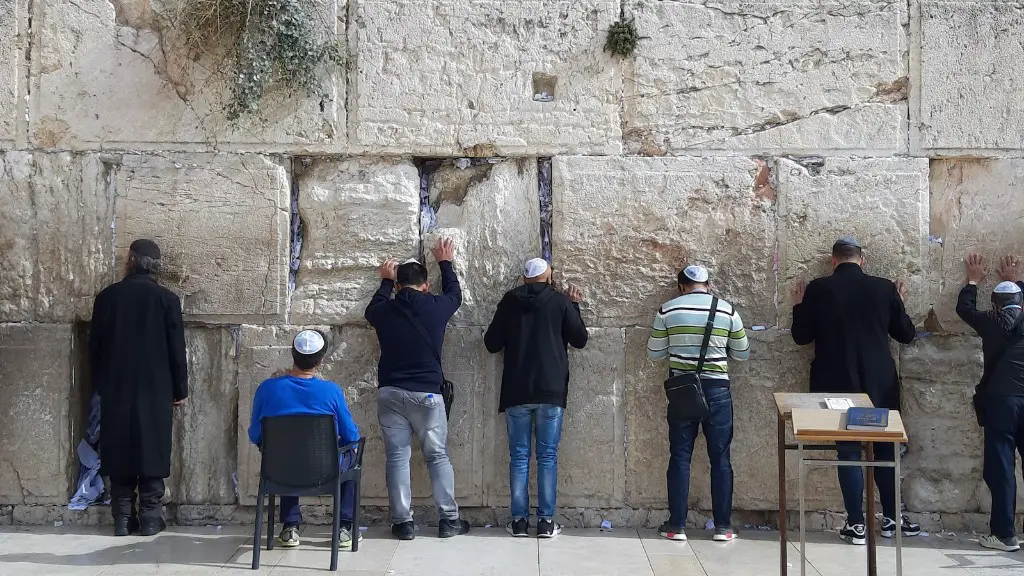The destruction of the second temple in Jerusalem in 70 CE was a pivotal event in the history of Judaism. The temple was the center of Jewish religious and cultural life, and its destruction had a profound and lasting impact on the Jewish people. Many of the practices and beliefs of Judaism today developed in response to the loss of the temple and the resulting changes in Jewish life.
The destruction of the second temple changed Judaism because it meant that there was no longer a physical place for Jews to go to worship. Instead, they had to rely on their own homes and synagogues for worship. This also meant that the Jewish priesthood was no longer needed, and that rabbis became more important in Jewish religious life.
How did the destruction of the Temple affect Judaism?
The First Temple in Jerusalem was destroyed by the Babylonians in 586 BCE and the Jews of the Kingdom of Judea went into exile. In 538 BCE, during the reign of Cyrus the Great, the Jews returned to Jerusalem and were able to build the Second Temple on the site of the original one that had been destroyed.
The destruction of the Second Temple was a turning point in the history of Judaism. From this point on, Rabbinic Judaism became the dominant form of Judaism, based on Jewish tradition and adjusting to new realities. The ritual of the Temple was replaced by prayer services in synagogues, which were based on the practices of Jews in the diaspora dating back to the Babylonian exile. This change had a profound impact on the Jewish people and their religion, shaping the course of Judaism for centuries to come.
What is the significance of the destruction of the Second Temple
The period between the construction of the Second Temple in 515 BCE and its destruction by the Romans in 70 CE was a time of great upheaval and change for Abrahamic religions. This period saw the rise of new religious movements, the spread of new beliefs, and the fall of longstanding traditions. These changes would have a profound impact on the development of Abrahamic religions in the years to come.
The destruction of the Second Temple in 70 CE changed Judaism in a number of ways. Firstly, it caused them to move away from sacrifices as a main part of their religion. Secondly, the Pharisees became the rabbis, and they transitioned from the Torah to the Oral Torah to the Talmud. Finally, rabbinic Judaism helped to form a response to the loss of the Temple, by providing a new focus on study and prayer.
What new form of Judaism emerged after the destruction of the Second Temple?
Judaism today is very different from the Judaism of ancient times. The destruction of the second temple by the Romans in 70 CE resulted in the rise of Rabbinic Judaism, which focused on the Torah and the synagogue instead of the temple. Today, Judaism is still based on the teachings of the Torah, but there are many different interpretations of what those teachings mean. Jews also no longer believe that they need a physical temple in order to worship God; they can do so anywhere.
The Temple Mount is a very important part of Jewish tradition and history. It is the location of the two Temples, which were central to Jewish worship and religious life. The Temple Mount is also the location of a number of important events which occurred in the Bible, including the Binding of Isaac, Jacob’s dream, and the prayer of Isaac and Rebekah. These events are significant to Jews because they demonstrate the importance of the Temple Mount in the history of the Jewish people.
What is the significance of the destruction of the Temple of Jerusalem?
The destruction of the First Temple in Jerusalem and the subsequent deportations of Jews to Babylonia in 586 and 582 were seen as fulfillments of prophecy by many Jews of that time. This strengthened Judaic religious beliefs and awakened the hope for the reestablishment of the independent Jewish state. The Babylonian captivity lasted for 70 years, after which the Jews were allowed to return to Jerusalem and rebuild the Second Temple.
Although Mark doesn’t record Jesus’ statement about destroying and raising the Temple in three days, the false accusation against Jesus in 14:57 indicates that he must have made some sort of comment about the Temple. It’s possible that Jesus was referring to the destruction of the man-made Temple and the raising of a new, spiritual Temple in three days.
What happened after the Second Temple period
The province of Judaea was fully incorporated into the Roman Empire in 6 BCE. Growing dissatisfaction with Roman rule eventually led to the First Jewish-Roman War (66-73 CE), which resulted in the destruction of Jerusalem and the Second Temple, bringing an end to the Second Temple period.
The destruction of Jerusalem obviously had a profound impact on the Jewish people. This event caused a dramatic change in Judaism itself. The people were once again separated from their contact with God. But this time, there were no prophets to comfort and reassure them of their future reinstatement in the holy city. This had to be a very difficult and confusing time for the Jewish people.
Which biblical Judaism describes the Judaism that developed after the destruction of the Second Temple 70 CE?
Rabbinic Judaism is the religion of the Jewish people in the period following the destruction of the Second Temple in 70 CE. It is based on the teachings of the rabbis, who are the religious leaders and teachers of the Jewish people. The rabbis interpret the Hebrew Bible and the oral tradition of the Jewish people, and they provide guidance on religious beliefs and practices. Rabbinic Judaism is practiced by Jews all over the world, and it is the foundation of the modern Jewish religious movements of Reform Judaism, Conservative Judaism, and Orthodox Judaism.
The priesthood in the First Temple was subordinate to the kings, but in the Second Temple, they became independent due to the lack of a monarchy. This independence allowed them to become a powerful force in Jewish society.
What religious and cultural influences likely affected the development of Judaism in the Second Temple period
Some historians have argued that Hellenism—Greek culture and ideas—influenced Judaism during the Second Temple period. Specifically, they point to Alexander the Great’s conquest of the Near East in the 330s BCE as a time when Greek influences would have first come into contact with Jewish thinkers. While there is certainly some evidence of Greek influences on Judaism during this period, it is far from clear that it was a significant or significant factor in the development of Judaism.
The book of Revelation is a book of the Bible that is widely believed to have been written shortly before or after the fall of Jerusalem and the destruction of the Second Temple in the year 70. Internal evidence suggests that it probably originated in Syria or Palestine among a Christian community consisting at least partly of non-Jews who spoke Greek rather than Aramaic or Hebrew.
When was second temple Judaism?
Second Temple Judaism was a period of time when Jewish traditions flourished between the return of exiles from Babylon and the rebuilding of the Jerusalem Temple. This was a time of great change for the Jewish people, and their religious beliefs and practices. Second Temple Judaism was a time of great diversity, with different groups of Jews embracing different customs and beliefs.
There is not a Jewish community in the world that doesn’t have a synagogue. Many of them are called temples. Synagogues are places of worship for Jews and are typically led by a rabbi. They are also used as community centers, where Jews can gather for social, educational, and cultural events.
Warp Up
The destruction of the Second Temple in Jerusalem by the Romans in 70 CE had a profound and lasting effect on the Jewish people. The loss of the Temple, which had been the center of Jewish religious and cultural life for centuries, was a devastating blow. It led to the rise of new religious movements such as Christianity and Rabbinic Judaism, and the Jewish diaspora. The Second Temple was not simply a building, but a symbol of the Jewish people’s connection to their God and their homeland. The destruction of the Temple, therefore, was a shattering event that changed the course of Jewish history.
The destruction of the Second Temple by the Romans in 70 CE was a devastating event for the Jewish people. The Temple had been the center of their religious and political life for centuries, and its loss left them reeling. Judaism did not disappear, however. The rabbis stepped in to provide guidance and interpretation of the law, and the Jewish people continued to practice their faith, even in the face of adversity. Over time, Judaism adapted and changed, emerging as a religion that is still practiced by millions of people today.




